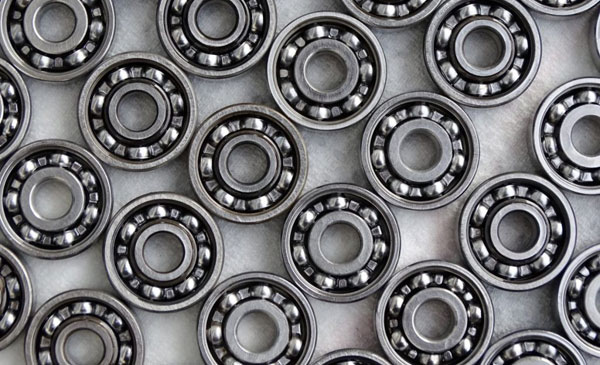The Manufacture of Ball Bearings
In order to maximize the surface areas of contact and minimize surface pressures, standard balls are used. However, friction is an issue and reduces optimal performance. Friction increases with the area of contact. Achieving optimum performance is not possible without reducing friction. JESA SA specifies the best internal geometry of the ball bearings to achieve lifetime performance. Cages are also used to limit friction. These cages are placed inside the ball or the inner or outer ring. However, cage contact causes energy loss and slipping.

Hoffman process
The Hoffman process for manufacturing ball bearings was first developed in 1898 by Geoffrey and Charles Barrett, who sought the advice of Ernst Gustav Hoffmann, a Swiss-American manufacturer of ball bearing machines. The Barrett cousins named their company after Hoffmann and were able to make the ball bearings that would be used for automobiles and bicycles. This process was successful and soon became world famous. It was known to be very accurate, with accuracy levels of one thousandth of an inch to 2.5 microns.
The Hoffman process involved building a machine that generated true spheres. This process is still used today and is based on the laws of rolling motion. The invention of this process was originally a difficult one, and Hoffman had to relocate to England to secure the capital that would fund his company. After a short time, his company began to grow and millions of dollars poured into England to purchase his product.
Grades of ball bearings
When purchasing a ball bearing, it is important to know that there are different grades available. The differences are based on material, quality, design, availability, lead times, and service. For example, one manufacturer may only sell grade P4 ball bearings while another may only sell grade P5. Then again, all ball bearings are not created equal. Some types are more expensive than others.
The Federal Trade Commission's original determination of "like product" covered a broad spectrum of products. The Commission considered the record evidence and practice in other cases to come to its decision. Though there was some evidence in favor of a separate like product for ADP bearings, the agency found that the ADP ball bearing was not an identical product.
Material used in ball bearings
A variety of materials are used in the manufacture of ball bearings. Among them are steel, plastic, and glass. The material used in ball bearing manufacture depends on the type of ball, as well as the requirements of the end user. For example, glass balls must be resistant to chemical agents. Soda-lime glass, which is used in bottles and flat glasses, is suitable for ball bearing manufacturing because of its good chemical properties. Soda-lime glass is also known as lemon glass due to its light green color.
Stainless steel is another material used in ball bearing manufacture. Its sturdiness and corrosion resistance make it an excellent choice for applications that require a high level of cleanliness and non-magnetic materials. Ceramic ball bearings, on the other hand, have a high hardness and are lightweight, making them an excellent choice for high-temperature and high-humidity conditions.
Testing for rigidity
Ball bearings have dynamic stiffness, and this value can be used to judge the performance of bearings in rotating machinery. Dynamic stiffness is affected by the preload and rotational speed. At low rotational speeds, the dynamic stiffness of the bearing does not change, but as the rotational speed increases, the stiffness increases.
To determine the rigidity of ball bearings, they must be subjected to rigorous testing. This is essential because the ball bearing must maintain its stiffness even during rough usage. The testing process helps determine the stiffness of a bearing and provides data for subsequent rectification steps.
Standards
Ball bearings are used in many applications. The ABEC bearing rating scale is used to classify different types of bearings. Higher graded bearings are designed for high precision applications, like aircraft instruments and surgical equipment. Lower graded bearings are designed to perform well in most applications. In both cases, the quality of ball bearings is a key factor in their performance.
Ball bearings are made to meet specific tolerances and requirements, which help to ensure consistent performance and long service. The tolerances are standardized for both steel and ceramic materials. The accuracy of ball bearings is measured in terms of ball diameter and roughness, and manufacturers of both steel and ceramic balls must adhere to the standards.
- Previous: Three Key Performance Parameters of Main Bearing Manufacturers
- Next: Slim Bearings Manufacturer











